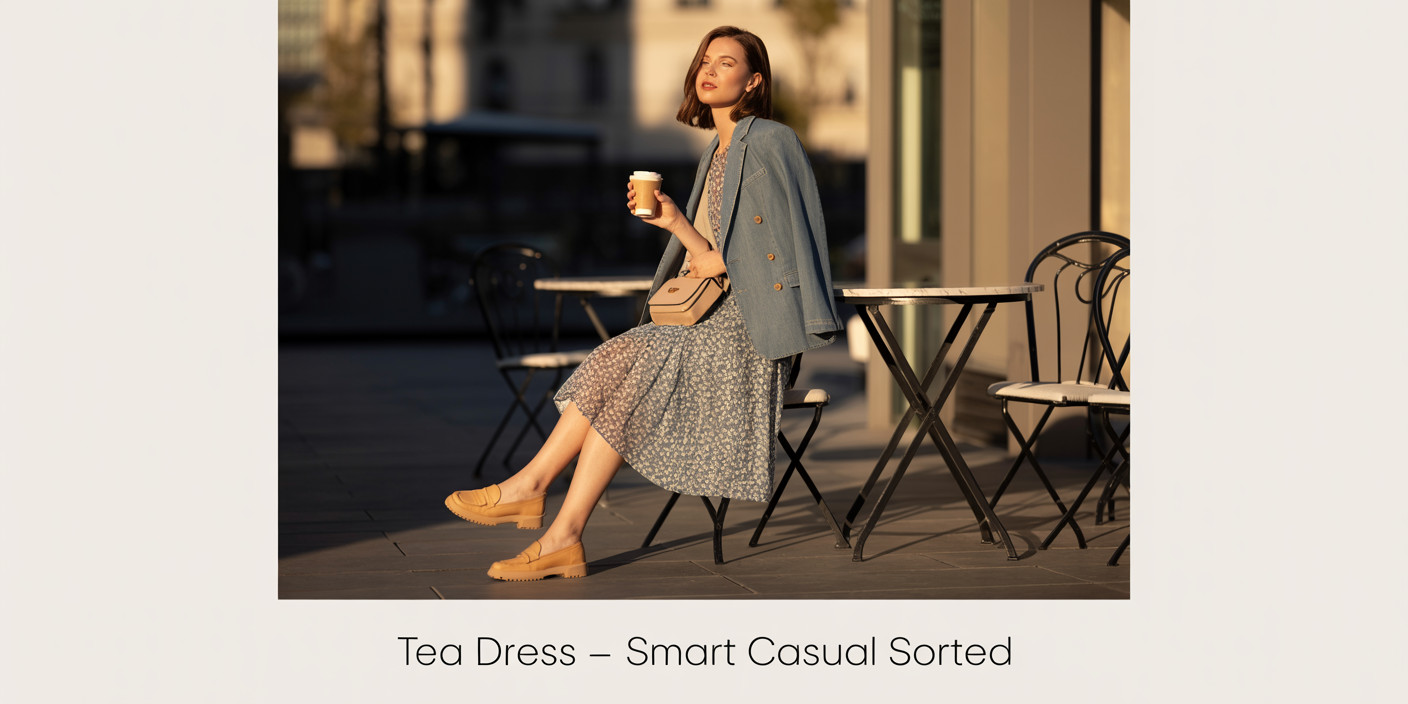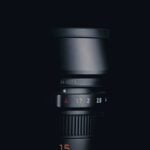The tea dress, embodying a quintessentially British blend of elegance and comfort, serves as a versatile choice for smart casual occasions. Historically cherished for sophisticated tea gatherings, this garment now transcends its traditional roots, offering a stylish option for modern events. Whether you’re navigating an afternoon soiree or a relaxed business brunch, understanding how to pair a tea dress with the right accessories can elevate your appearance and reflect both tradition and contemporary fashion. In this guide, we delve into the nuances of the tea dress and provide tips on perfecting smart casual attire for varied tea-centric occasions.
Brief Overview
Discover the timeless elegance of the tea dress, a versatile garment perfect for smart casual occasions. Originally designed for sophisticated gatherings, tea dresses have evolved from classic, flowing silhouettes to incorporate modern style while maintaining their inherent grace. Understanding the origins and evolution of the tea dress, from its 19th-century roots to present-day adaptations, enriches appreciation for this wardrobe staple. Additionally, mastering the nuances between high tea and afternoon tea enhances both historical and cultural appreciation. Dress codes for these events reflect their social significance, calling for a harmonious blend of tradition, personal expression, and seasonal flair.
Key Highlights
- The tea dress blends elegance and comfort, ideal for both casual and formal settings.
- High tea evolved from a working-class meal, diverging from the refined afternoon tea tradition.
- Afternoon tea emphasizes light snacks and elegance, contrasting with high tea’s hearty dishes.
- Dressing for afternoon tea balances tradition with modern style, focusing on modesty and refinement.
- Seasonal dressing for high tea embraces both personal style and adherence to traditional codes.
Understanding the Tea Dress: A Classic Wardrobe Staple
The tea dress has become a celebrated staple in many wardrobes, combining both tradition and modernity in its unique design. Originally hailed as a versatile garment for informal gatherings, the tea dress has evolved over the years to encompass both casual and formal settings. Known for its flowing midi length and elegant silhouette, this classic piece offers endless styling possibilities. Whether you’re attending a formal event or a casual gathering, a tea dress provides the perfect blend of comfort and style. In understanding the origins and selection of the perfect tea dress, one can appreciate its timeless appeal.

The Origins and Evolution of the Tea Dress
The tea dress first emerged in the late 19th century, a period characterized by significant shifts in fashion dynamics. Originally, these dresses were designed primarily for women to wear during tea parties or at-home gatherings, combining practicality with subtle elegance. The length of the original tea dress was typically around the ankle or mid-calf, making it a comfortable option for indoor occasions. One key aspect of the design was its loose-fitting structure, often allowing for ease of movement while ensuring that women adhered to the formal expectations of the time. The tea dress was not only a symbol of elegance but also of freedom, as it allowed women to maintain their grace without the constrictive elements typical of more formal attire.
As fashion evolved, the tea dress started to undergo transformations in both design and purpose. The mid-20th century saw a departure from strictly traditional designs, as the tea dress began embracing bolder patterns and more diverse fabric choices. This period witnessed the introduction of the midi dress, a variation that maintained the classic silhouette while adapting to modern tastes. The era of the 1970s brought further evolution; tea dresses began incorporating more contemporary styles, merging with bohemian influences to produce vibrant patterns and lighter fabrics suitable for all-day wear. Despite these changes, the essence of the tea dress remained unchanged: a versatile piece that could transition effortlessly from a casual to a more formal setting.
Today, the tea dress retains its popularity because of its versatility. Many women appreciate the balance it strikes between classic and contemporary styles. Its evolution reflects both societal shifts and personal expression in fashion, allowing the tea dress to remain a favored piece for those wanting a touch of elegance in their wardrobe. Throughout its history, the tea dress has proven itself a constantly adaptable, yet ever-charming addition to any wardrobe, equipping the modern woman with a garment that’s as functional as it is fashionable.
Expanding on the tea dress’s current appeal, here are some modern features and trends that keep this timeless piece in vogue today: 1. Vibrant floral patterns evoke a sense of timeless romance. 2. Sustainable fabrics cater to eco-conscious fashionistas. 3. Midi lengths balance elegance with everyday practicality. 4. Vintage-inspired silhouettes offer a nostalgic nod to past decades. 5. Versatile necklines adapt to both casual and formal settings. 6. Layering potential for year-round versatility and comfort. This blend of traditional elegance and modern innovation ensures the tea dress remains a staple for contemporary wardrobes.
How to Choose the Perfect Tea Dress
Selecting the perfect tea dress involves a harmonious blend of personal style, occasion, and comfort. To begin with, it’s essential to consider the length that best suits your frame and personal preference. A midi dress is generally flattering for most body types, striking a balance between showing a little leg while remaining formally tasteful. The length often dictated by personal comfort can complement both casual and formal gatherings, making it an exceptionally versatile choice. Consider the classic appeal of a tea dress when determining whether to opt for a traditional or contemporary design. Classic tea dresses often feature floral patterns or muted shades, bringing a sense of timeless elegance, while modern interpretations showcase bold colors and edgy prints, perfect for making a statement.
When choosing the perfect tea dress, fabric selection plays a crucial role. Lighter materials such as cotton or linen are perfect for summer outings, ensuring comfort and breathability. In contrast, opting for fabrics like silk or satin adds an element of luxury, suitable for more formal events. Pay attention also to the fit, the tea dress is celebrated for its flowing, yet somewhat structured silhouette, ensuring it drapes nicely over your body without restricting movement. This ease and flexibility of the design cater to a variety of settings, from afternoon teas to weddings, enhancing its reputation as a wardrobe staple.
Accessorizing your tea dress can elevate your outfit from simple to show-stopping. Pair the dress with sleek accessories like statement jewelry or a chic belt to cinch the waist for a more polished look. Footwear choices also matter; pairing a tea dress with classic pumps or elegant sandals can enhance its formal appeal, while flats or even sneakers can keep it delightfully casual. Remember, the key to selecting the ideal tea dress lies in aligning it with your personal style, the occasion’s tone, and the desired level of comfort. Through mindful selection, you craft an ensemble that reflects both your personality and the enduring allure of a tea dress.
What is High Tea and How Does it Differ From Afternoon Tea?
Understanding the nuances between high tea and afternoon tea unveils a rich tapestry of cultural traditions and culinary delights. High tea, often misconceived as a sophisticated affair, actually emerged as a more substantial meal for the working class, marking the end of a laborious day with hearty fare. In contrast, afternoon tea is associated with leisure and refinement, characterized by finger sandwiches, scones, and pastries elegantly presented on tiered stands. Delving into the history and key distinctions of these two beloved tea rituals enhances appreciation and guides etiquette when participating in such gatherings, both traditional and modern.
| Aspect | High Tea | Afternoon Tea |
|---|---|---|
| Origin | Working-class tradition | Aristocratic pastime |
| Time of Day | Evening meal (5-7 PM) | Late afternoon (3-5 PM) |
| Menu | Hearty dishes (meat pies, cold meats) | Light snacks (sandwiches, scones) |
| Setting | Kitchen or dining table | Drawing room or garden |
| Purpose | Sustenance after work | Social gathering and leisure |
This table highlights how high tea and afternoon tea evolved from distinct historical and social origins into the beloved rituals celebrated today.
The History and Tradition of High Tea
The origins of high tea are steeped in the daily routines of the English working class during the 19th century. Contrary to the elegant notion often associated with the term today, high tea was historically a practical meal. It was originally enjoyed post-work and involved substantial dishes that heartily refueled laborers after a day’s end. The term “high” in high tea doesn’t refer to social standing but rather to the high, or main, dining tables where the meal was served, as opposed to the lower height of the petite tables used in more genteel afternoon tea gatherings. The meal typically included a variety of hearty foods such as meats, breads, cheeses, pot pies, and of course, tea. It was an occasion for families to come together and converse, often in a relaxed home environment. This historical context contrasts with the more formalized notion of afternoon tea, which is often accompanied by fine china and silverware, focused more on light snacks and delicacies paired with tea.
High tea traditions have evolved, but they retain their cultural roots. Today, high tea is often a more lavish event, taking cues from its more affluent sibling, afternoon tea, in incorporating an aspect of refinement. This includes an expanded menu to serve broader tastes, often with a mix of sweet and savory items. However, the centrality of tea remains unchanged, providing a comforting constant around which the celebration revolves. This adaptability from its the original working-class identity to today’s more inclusive versions demonstrates high tea’s resilience and continued relevance. The dining experience today can range from a simple home-style meal to an elaborate spread, allowing for creative interpretations while maintaining core traditions. Modern adaptations might include international flavors and innovative presentations, reflecting contemporary culinary trends whilst honoring the history and enduring joy of gathering for tea.
| Aspect | High Tea | Afternoon Tea | Notes |
|---|---|---|---|
| Origins | Emerged in the late 19th century, primarily among the working class in Britain. | Introduced in the early 19th century by Anna, Duchess of Bedford, as a way to bridge the gap between lunch and dinner. | High tea was more of a substantial meal, while afternoon tea was a social event. |
| Typical Menu | Includes meat dishes, bread and butter, cheese, and sometimes desserts. | Features light snacks such as scones, clotted cream, finger sandwiches, and pastries. | Afternoon tea is often lighter and more elegant compared to the hearty high tea fare. |
| Social Context | Associated with working-class families and served as the main evening meal. | Became a fashionable social occasion among the upper classes, often held in drawing rooms. | High tea was practical and filling, while afternoon tea was largely a symbol of social status. |
This table highlights the evolving traditions and current practices that distinguish high tea from afternoon tea, showcasing their unique roles in culinary history.
Key Differences Between High Tea and Afternoon Tea
The distinctions between high tea and afternoon tea highlight the differing social and cultural contexts from which these customs arose. Afternoon tea, often perceived as a quintessentially British tradition, was introduced in the early 1800s by Anna, the Duchess of Bedford. As dinner was traditionally served late in the evening, the Duchess found herself experiencing a “sinking feeling” during the late afternoon. To combat this, she began inviting friends over for tea and a light selection of snacks. This practice quickly evolved into a social event for the upper echelons of society, characterized by elegance and refinement. The spread was artfully curated, featuring delicate finger sandwiches, scones adorned with clotted cream and jam, and a selection of pastries, enjoyed over leisurely conversations in the drawing rooms of the aristocracy. The attire for afternoon tea was also significant, with guests typically dressing in formal, yet stylish outfits to match the sophisticated atmosphere.
Conversely, the high tea tradition was embraced by the working class as a substantial meal to end the day. The menu was decidedly more robust, with offerings like meat dishes, thick-cut bread, and savory pies. High tea was a family affair, enjoyed around the dinner table rather than the elegantly adorned tea rooms of the elite. Hence, the nomenclature, ‘high’ not for its social height but for the table at which it was served, and the essence lies in sustenance and functionality as much as social bonding. Over time, the perception of high tea has shifted, often blending elements of both traditions, yet the fundamental difference remains rooted in the meal’s heartiness. Today, while high tea may take on a more refined form, it retains its authentic roots, offering a satisfying meal often with a diverse selection aimed at catering to modern tastes while bidding homage to its historical underpinnings.
In choosing between high tea and afternoon tea, consider the occasion and desired experience. Afternoon tea offers a genteel, leisurely experience of light refinement, while high tea promises a satisfying, hearty end-of-day meal. Both create a sense of warmth and connection, mirroring their rich, storied past. Understanding these differences not only enriches the experience but also celebrates their unique contributions to culinary history. With growing popularity worldwide, contemporary settings for both high and afternoon tea continue to blend tradition with modern tastes, ensuring these cherished rituals endure while gaining new followers who appreciate the art of tea.
Dressing for Afternoon Tea: Style and Etiquette
Afternoon tea is a time-honored tradition that invites participants into a world of elegance and refinement. Dressing for it involves understanding both style and etiquette to create an experience that’s both sophisticated and relaxed. Key considerations include choosing attire that aligns with traditional expectations while infusing a touch of modern flair. By exploring tips for women on what to wear and decoding the nuances of dress codes, one can confidently enjoy this refined social activity. Understanding these elements ensures that you not only look the part but also fully savor the social charm of afternoon tea.
Tips for Women on What to Wear to Afternoon Tea
Choosing the perfect outfit for afternoon tea involves a delicate balance of tradition and personal style. It’s about showcasing a polished appearance without overshadowing the occasion’s underlying elegance. Typically, a tea dress is an excellent choice for such an event, offering both comfort and a classic silhouette. The tea dress, which we have previously explored as a timeless wardrobe staple, remains an ideal option for women attending afternoon tea. Its flowing design and midi length provide versatility, allowing it to suit the formal yet relaxed nature of the gathering. Selecting a dress in a muted pattern or a soft, pastel color can enhance this sense of refinement while embracing well-respected sartorial traditions. Accessorizing a tea dress for afternoon tea requires subtle elegance. Opt for understated jewelry, perhaps a delicate necklace or a pair of pearl earrings, to complement your outfit without drawing away from its simplicity. Handbags should ideally be small and structured, such as a clutch or a petite shoulder bag, to maintain the outfit’s cohesiveness. Footwear is equally important; classic ballet flats or low-heeled pumps are preferred over more casual sneakers or overly formal high heels, balancing comfort with sophistication. It’s crucial to be mindful of the specific tea setting you’re attending, as some venues may have their own guidelines. Formal venues often prefer guests to adhere to stricter dress codes, steering away from overly casual pieces like denim or sporty attire. Conversely, a less formal setting might afford a bit more leeway, allowing for more contemporary styles while still maintaining the essence of afternoon tea etiquette. By adhering to these insights and melding personal style with traditional norms, women can comfortably and appropriately dress for any afternoon tea, ensuring an appreciative nod to this esteemed cultural ritual.
| Category | Attire | Guidelines | Do’s | Don’ts |
|---|---|---|---|---|
| Dress Type | Tea Dress | Comfortable yet elegant | Floral patterns | Overly casual |
| Accessories | Minimal Jewelry | Subtle and refined | Pearls | Excessive bling |
| Footwear | Heels/Flats | Appropriate for occasion | Nude or soft colors | Chunky styles |
| Outerwear | Cardigan/Blazer | Weather suitable | Tailored fit | Bulky jackets |
| Color Palette | Pastels/Neutrals | Soothing and warm tones | Light blues, pinks | Neon or bold colors |
This table encapsulates the essential guidelines for selecting appropriate attire for afternoon tea gatherings. By outlining recommended styles, accessories, and footwear, it serves as a quick reference to ensure attendees are dressed elegantly and suitably, aligning with traditional tea-time customs.
Understanding the Dress Codes for Afternoon Tea
The dress codes for afternoon tea are integral to maintaining the decorum and grace traditionally associated with the experience. These codes can occasionally vary depending on the venue, but they generally emphasize modesty, attention to detail, and a sense of understated luxury. Primarily, the smart casual dress code dominates afternoon tea gatherings. This code suggests a neat, polished appearance that eschews ultra-casual wear while stopping short of black-tie formality. For women, this translates to wearing dresses, skirts, or tailored trousers coupled with blouses or elegant knit tops. The tea dress, known for its historical significance and effortless charm, easily fits this category, bridging the gap between casual and formal. Understanding the nuances within the smart casual code is crucial. In more traditional places, certain color palettes and patterns are considered more appropriate. Soft colors like pastels, creams, and earthy tones are favored, aligning with the serene atmosphere of afternoon tea. Patterns, if chosen, should be modest, florals or subtle stripes can add an element of personality without violating the expected decorum. Length also plays a significant role; midi lengths are conventionally accepted, as they offer the required modesty while allowing ample freedom of movement. The choice of accessories further accentuates compliance with afternoon tea dress codes. Simplicity is key: minimal jewelry, classic watches, and tidy hair complement the thematic elegance of the gathering. Footwear that blends formality with comfort, such as brogues or closed-toe heels, evidences respect for the tradition. While hats are not a strict requirement, they are sometimes embraced as an homage to traditional afternoon tea fashion, especially in more vintage settings. Ultimately, understanding and adhering to the dress codes for afternoon tea fosters a shared respect for this age-old social custom. By embracing the intersection of personal style and traditional practice, one can enjoy afternoon tea to its fullest, honoring both the grand tradition and the intimate nuances of attire etiquette associated with it.
| Attire Element | Description | Etiquette Considerations |
|---|---|---|
| Dresses | Elegant, modest silhouettes; floral prints or pastel colors preferred | Avoid overly casual styles; consider the venue’s atmosphere |
| Hats | Wide-brimmed or elegant fascinators | Choose a hat that complements the outfit and isn’t too ostentatious |
| Footwear | Closed-toe flats or low heels | Opt for comfort without compromising on style; sandals are typically too casual |
| Accessories | Subtle jewelry; small, sophisticated handbags | Keep a balance between simplicity and elegance; avoid overly flashy items |
| Outerwear | Light cardigans or shawls | Consider the weather and formality of the setting; avoid bulky coats |
This table encapsulates the interplay between tradition and personal style in afternoon tea attire, illustrating how women can dress appropriately while honoring the elegance of this cultural ritual.
High Tea: The Ultimate Dress Code Guide
High tea is not just about the delightful array of food but also about ensuring you’re dressed appropriately for the occasion. Whether you’re embracing the warmth of summer or the crisp chill of winter, seasonal dressing for high tea can elevate your experience. Similarly, understanding how to dress for various high tea occasions ensures you remain stylish and respectful of long-established traditions. This guide will walk you through the best practices in seasonal dressing and outfit choices to make any high tea event elegantly memorable.
Seasonal Dressing for High Tea
Dressing seasonally for high tea involves more than just temperature considerations; it’s about encapsulating the essence of the season while aligning with the established tea dress code. Throughout the year, high tea offers a canvas for sartorial creativity, enabling you to tailor your wardrobe to reflect both personal style and seasonal changes. In the spring and summer, light and breathable fabrics are a crowning choice. Opt for linen or cotton dresses with short sleeves or sleeveless designs to accommodate warmer weather, infusing floral prints or pastels to echo the blooming flora. These decisions not only enhance personal comfort but also seamlessly blend with the traditional aesthetic associated with high tea.
As autumn approaches, the rich colors and textures of the season can be beautifully integrated into your high tea ensemble. Think deep maroons, forest greens, or mustard yellows in fabrics such as wool or heavy cotton. Three-quarter-length sleeves and layering with cardigans or well-fitted blazers can add a touch of sophistication while providing necessary warmth. The transition from outdoor vibrancy to indoor coziness in these months is perfectly mirrored by the seasonal deepening of your clothing palette.
Winter, on the other hand, calls for embracing comfort with style. Thicker fabrics in classic cuts, perhaps a midi dress in cashmere or velour, offer elegance while maintaining warmth. Layering becomes essential here, with chic coats or wraps complementing your outfit. Jewel tones and metallic accents can add a festive touch, ideal for holiday-themed high teas. Meanwhile, accessories like scarves, gloves, and delicate hat pieces become both functional and fashionable, helping to articulate a cohesive look that respects the dress code of high tea.
Each season brings its opportunities and challenges for dressing for high tea. By aligning your outfit with the time of year while adhering to the overarching ethos of elegance and style, you not only honor the high tea tradition but also express individualized refinement. This thoughtful approach ensures that your wardrobe choices enhance your high tea experience, offering both aesthetic appeal and respecting historical customs.
| Season | Fabric/Materials | Key Style Elements | Occasions |
|---|---|---|---|
| Spring/Summer | Linen, Cotton, Light Silk | Floral Prints, Pastel Colors | Casual Gatherings, Garden Parties |
| Autumn | Wool, Cashmere, Velvet | Jewel Tones, Rich Textures | Formal Events, Afternoon Teas |
| Winter | Heavy Wool, Tweed, Brocade | Layering Techniques, Dark Hues | Themed Parties, Holiday Gatherings |
This table distills the sartorial guidance provided in the text, outlining how to gracefully navigate high tea dress codes across the seasons and occasions.
High Tea Outfits for Various Occasions
Attending high tea outings presents a delightful opportunity to mix style with tradition, but understanding the appropriate attire for various occasions is key. Different high tea events can dictate varying levels of formality, influencing your choice of outfits. Whether the gathering is an intimate family affair or a grand societal event, it’s essential to tailor your attire accordingly.
For a casual high tea gathering amidst close friends or family, you might opt for something more relaxed yet chic. A well-chosen tea dress, which embodies both style and comfort, is a fantastic option. It allows freedom of movement and grace while nodding to the classic roots of tea-time traditions. Incorporate accessories that add a touch of personality, say, a statement necklace or fashionable scarf, this ensures a harmonious blend of style and tradition without leaning too much into formality.
When attending a more formal high tea occasion, perhaps as part of a corporate gathering or upscale event, elevating your outfit becomes imperative. The dress code skews more towards smart casual with an emphasis on refinement. Here, opting for a tailored suit dress or a more structured outfit in sophisticated tones can convey an aura of elegance suitable for such events. Footwear, like classic heeled pumps, can enhance the look, while a structured handbag completes the ensemble, maintaining the nuanced etiquette associated with high tea affairs.
Seasonal or theme-based high teas open another pathway to creative dressing. During festive periods, channeling the spirit of the occasion within your clothing adds a deeply personal touch. Think themed accessories that reflect holiday cheer, or colors that symbolize seasonal festivities. In contemporary high tea settings, these themed adaptations allow for a modern twist on tradition, inviting attendees to leave their stylistic mark while observing the long-established customs of attire.
Regardless of the nature of the high tea occasion, a balance of personal expression and respect for tradition is crucial. Dressing suitably showcases an appreciation for both the heritage and the fashionable dynamism of high tea events. With thoughtful selection, your outfit not only fulfills expectations but reflects the day’s significance and your unique presence, making the event memorable for you and those gathered.
| Season | Key Fabrics & Colors | Outfit Suggestions | Accessories | Occasion Impact |
|---|---|---|---|---|
| Spring | Light cottons, pastel shades | Floral dresses, linen suits | Pearl earrings, pastel scarves | Brings freshness and vibrancy to afternoon tea gatherings |
| Summer | Linen, soft florals | Light sundresses, tailored shorts with blouses | Wide-brimmed hats, light shawls | Adds a breezy, relaxed elegance to outdoor high tea events |
| Autumn | Wool, earth tones | Knee-length skirts, lightweight cardigans | Faux leather belts, ankle boots | Maintains a warm, cozy feel ideal for cozy tea rooms |
| Winter | Velvet, rich jewel tones | Knee-high boots with tights, wool dresses | Plush scarves, statement brooches | Conveys a sophisticated and warm elegance, perfect for formal high tea settings |
This table highlights how dressing thoughtfully for high tea not only respects tradition but also embraces personal style and seasonal charm.
Navigating the nuances of tea dress smart casual can be both enjoyable and enlightening. Embrace the opportunity to mix classic elegance with modern flair, selecting pieces that reflect your personal style while honoring tradition. Balancing these elements allows you to feel confident whether attending an afternoon tea or a casual gathering. Remember, the essence of a tea dress code is its flexibility, enabling you to adapt it to various settings and occasions. By following these guidelines, you can express your individuality and appreciate the subtle sophistication this timeless dress code offers.
What is a tea dress and for what occasions is it suitable?
A tea dress is a versatile garment that blends elegance and comfort, making it ideal for smart casual occasions. Originally designed for sophisticated tea gatherings, it now suits modern events like afternoon soirees or relaxed business brunches.
How has the tea dress evolved over time?
The tea dress first emerged in the late 19th century as a loose-fitting garment for indoor occasions. By the mid-20th century, it adopted bolder patterns and diverse fabrics. The 1970s introduced more contemporary styles with bohemian influences. Today, it retains its classic silhouette while accommodating modern tastes.
What are the differences between high tea and afternoon tea?
High tea originated as a working-class meal with substantial dishes, emphasizing heartiness. Afternoon tea, introduced by the Duchess of Bedford, is a refined social event characterized by light snacks like finger sandwiches and pastries. Despite the common misconception, high tea is a more substantial meal than afternoon tea.
How should one accessorize a tea dress for a formal occasion?
To accessorize a tea dress for formal occasions, use understated jewelry such as a delicate necklace or pearl earrings. Choose a small structured handbag, like a clutch, and elegant footwear like ballet flats or low-heeled pumps to maintain a refined look.
What is the ideal fabric and fit for a tea dress based on the occasion?
For casual or summer outings, opt for lighter fabrics such as cotton or linen, offering breathability and comfort. For formal settings, choose luxurious fabrics like silk or satin. The perfect fit is flowing yet structured, ensuring comfort and elegance in varied settings.









